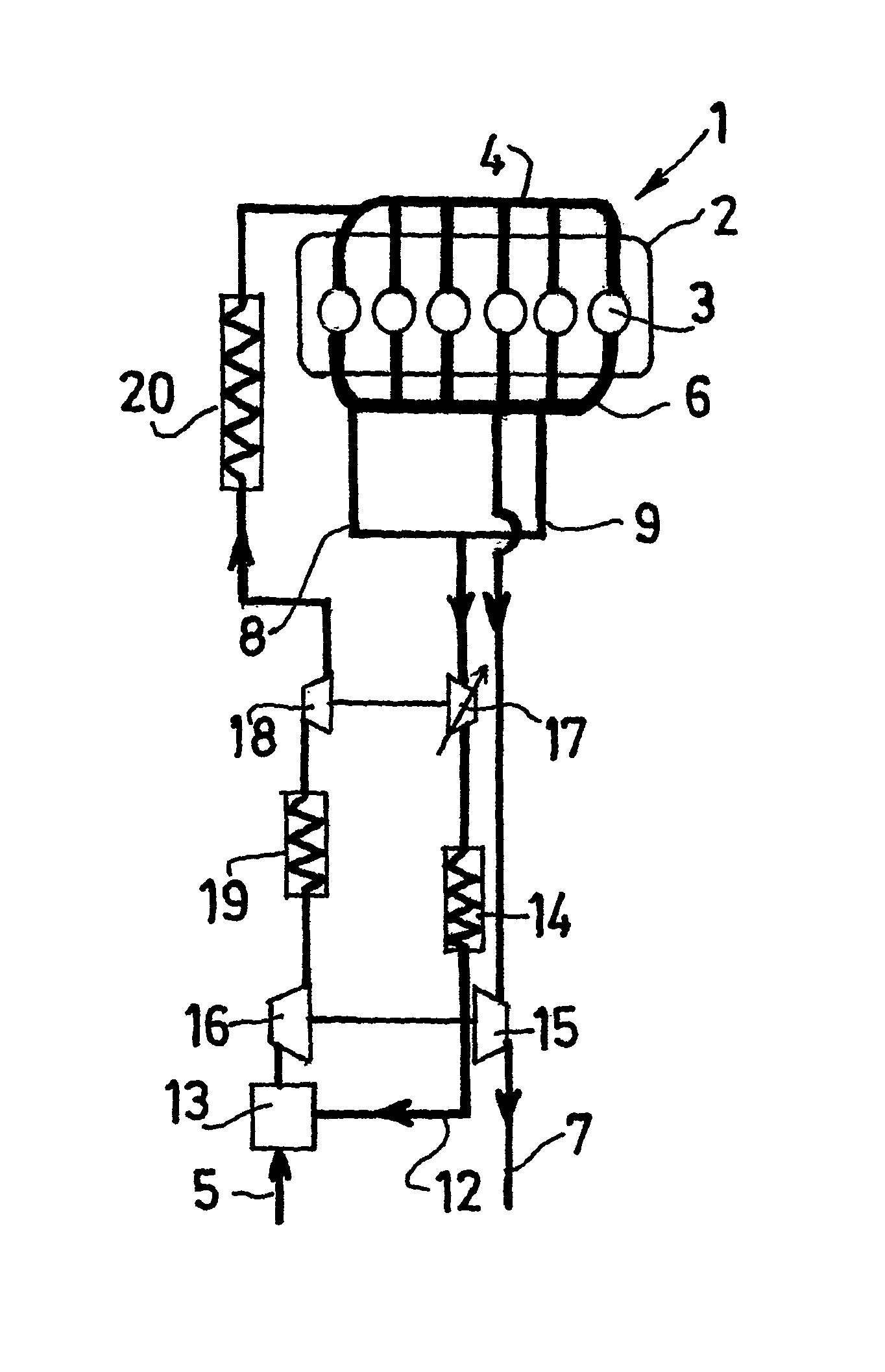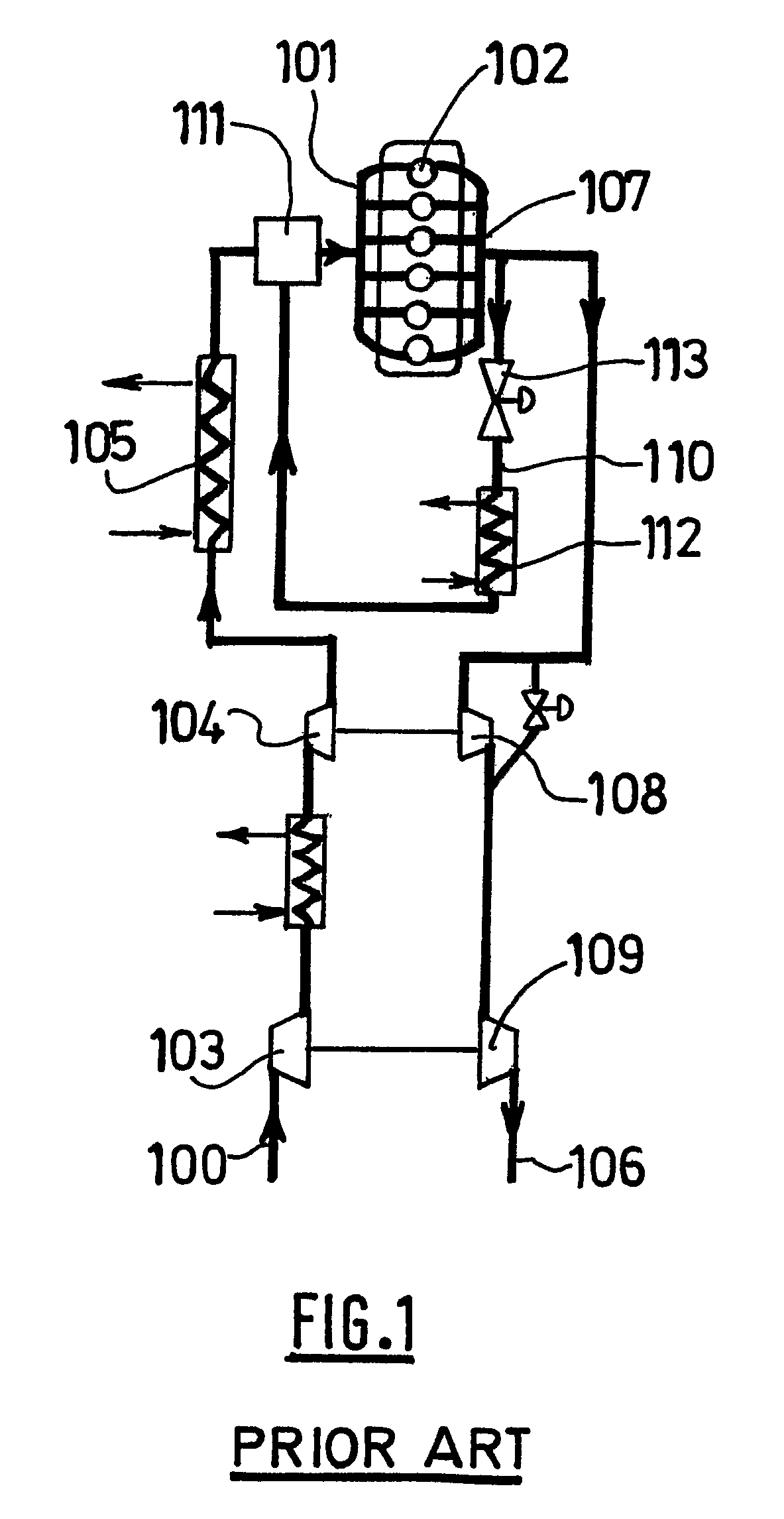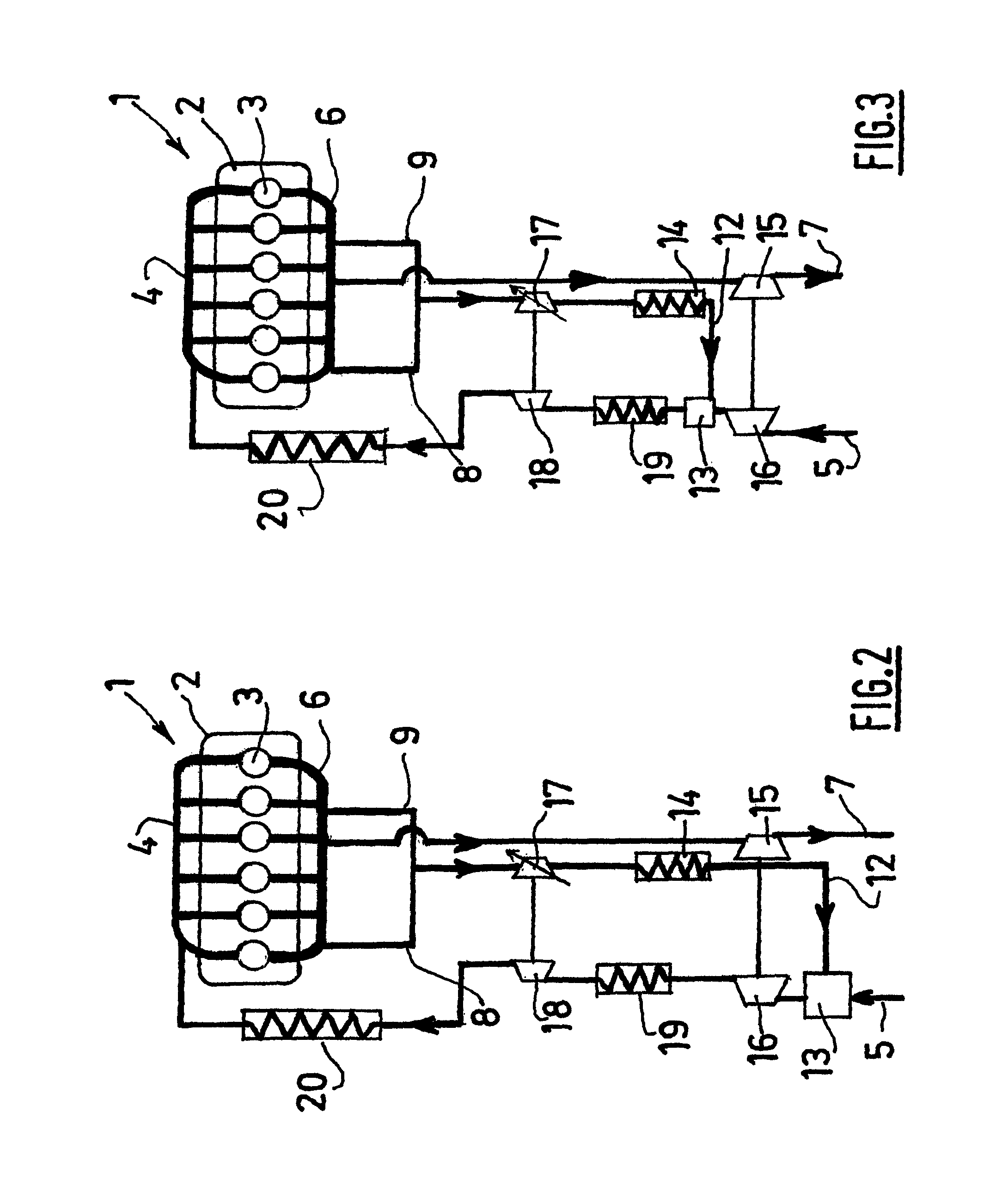Internal combustion engine comprising an exhaust gas recirculation system
a technology of exhaust gas recirculation and combustion engine, which is applied in the direction of machines/engines, mechanical equipment, non-fuel substance addition to fuel, etc., can solve the problems of reducing combustion temperature and oxygen concentration, limiting nox generation, and significant heat transfer from hot exhaust gas to coolant, etc., to achieve better mixing of egr gas, less expensive, and better cooling of egr gas
- Summary
- Abstract
- Description
- Claims
- Application Information
AI Technical Summary
Benefits of technology
Problems solved by technology
Method used
Image
Examples
Embodiment Construction
[0053]An internal combustion engine 1 typically comprises an engine block 2 defining a plurality of cylinders 3, namely six cylinders in the embodiments illustrated in the figures. The number and arrangement of cylinders as illustrated in the drawings is of course purely indicative.
[0054]Intake air is carried towards an intake manifold 4 feeding the cylinders 3, through an air intake line 5. The gas formed in each cylinder 3 can be collected by an exhaust manifold 6 arranged in two halves. An exhaust line 7 connected to the exhaust manifold 6 carries one part of the gas (exhaust gas) towards the atmosphere. The other part of the gas (EGR gas) is carried by two circuits 8, 9, each connected to one half of the exhaust manifold 6. These circuits 8, 9 meet and form a single EGR line 12 whose outlet comes out in an EGR mixer 13 connected to the air intake line 5. In the shown embodiments, the EGR line is also provided with an EGR cooler 14 using the engine coolant, located downstream of ...
PUM
 Login to View More
Login to View More Abstract
Description
Claims
Application Information
 Login to View More
Login to View More - R&D
- Intellectual Property
- Life Sciences
- Materials
- Tech Scout
- Unparalleled Data Quality
- Higher Quality Content
- 60% Fewer Hallucinations
Browse by: Latest US Patents, China's latest patents, Technical Efficacy Thesaurus, Application Domain, Technology Topic, Popular Technical Reports.
© 2025 PatSnap. All rights reserved.Legal|Privacy policy|Modern Slavery Act Transparency Statement|Sitemap|About US| Contact US: help@patsnap.com



